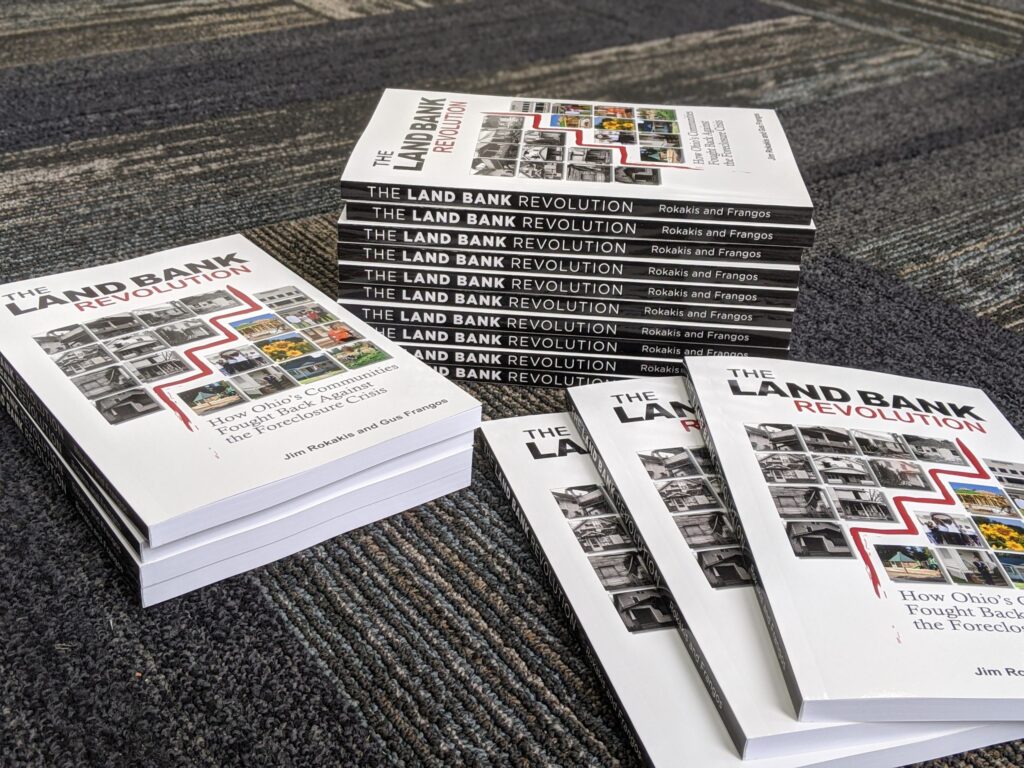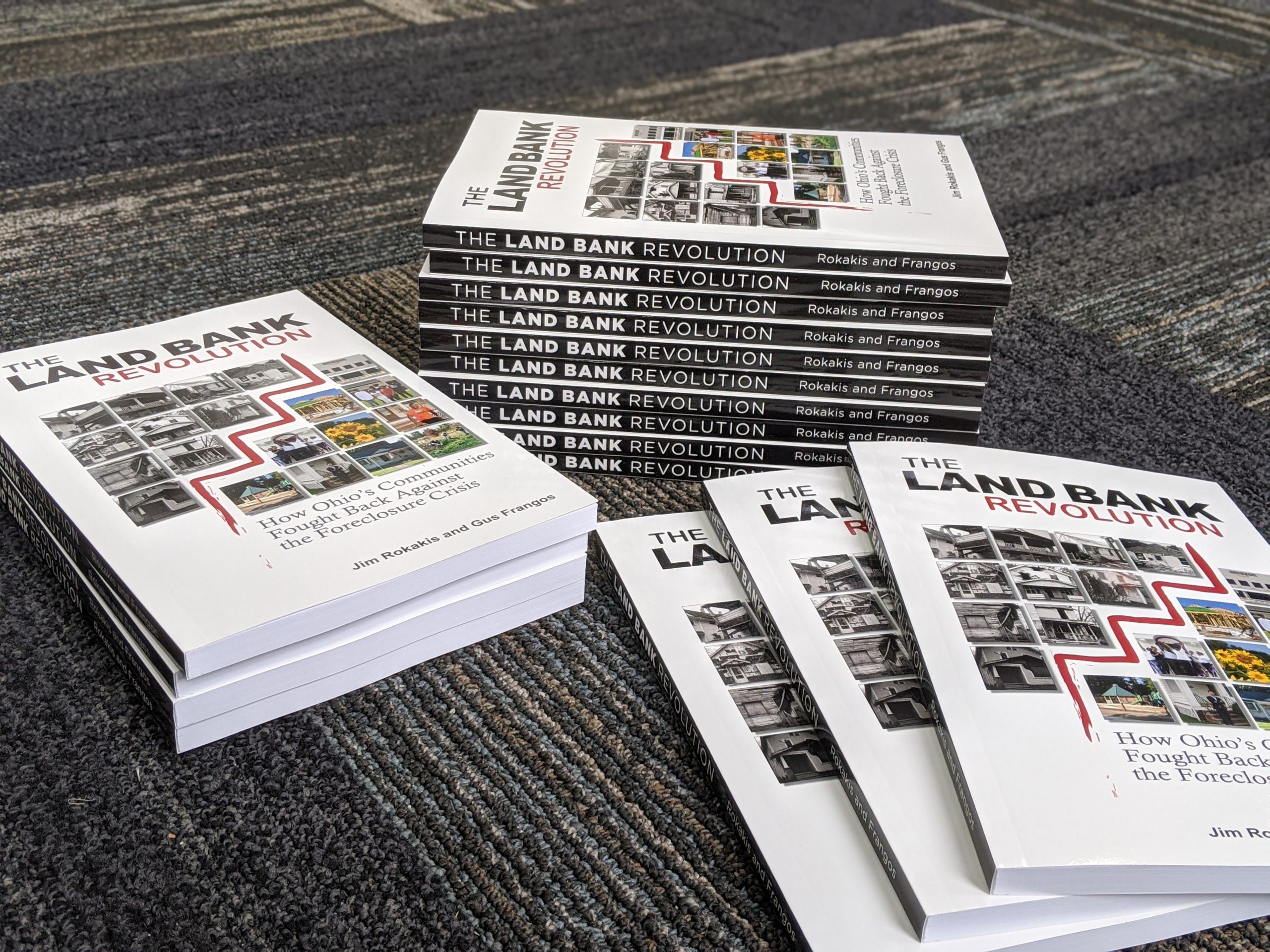Land Bank Revolution


“We operated, and continue to operate, under two axioms: (1) hurdles are a good thing because hurdles can be overcome; and (2) we avoid thinking ‘out of the box.’ Instead, maximum creativity to experiment would be to work ‘without reference’ to any boxes at all.” Ð Gus Frangos
Cuyahoga Land Bank President and General Counsel Gus Frangos recently co-authored a book with Jim Rokakis, former Cuyahoga County Treasurer and long-time steward of a more equitable, sustainable and economically prosperous Greater Cleveland.
The Land Bank Revolution: How Ohio’s Communities Fought Bank Against the Foreclosure Crisis examines the devastating impact that the foreclosure crisis had on America in the period between 2000-2010. What resulted came to be known as the Great Recession, and Ohio communities were especially hard hit. In Cuyahoga County, a group of dedicated public officials and community activists put together a powerful new tool called a county land bank. This book tells the story of those who, through pure determination, fought the scourge of abandoned properties and made life better for countless Ohioans.
This book tells the compelling story of ten years of collective action, from the initial crisis to the contagion-like spread of foreclosures throughout our communities to the policymaking and creation of the modern land bank.
Order your copy of the Land Bank Revolution today HERE.